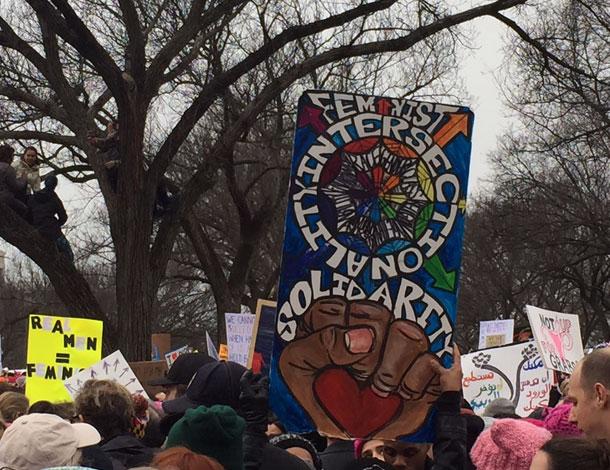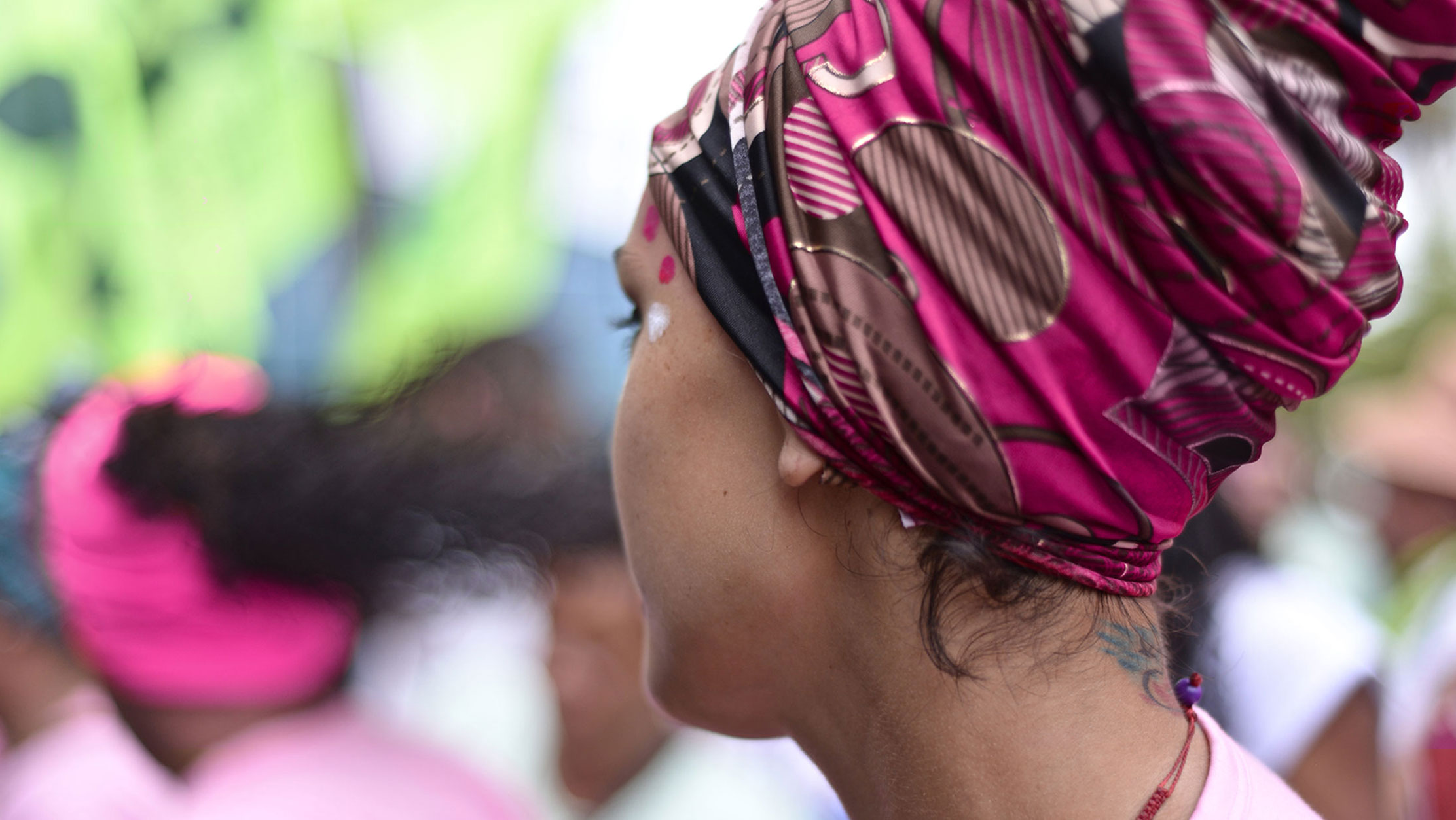I buried my head in work.
I couldn’t bear to follow the news of the inauguration ceremony taking place an hour away from my home. I live in a rural community in southern Maryland, houses and mobile homes are interspersed among family farms growing feed corn and soybeans.

Pre election, there were few campaign signs in my neighbors’ yards; I saw two for Cruz and one each for Trump and Sanders. Then one appeared, not far from my polling place, the week before the election: a giant cut-out of Sasquatch with the words “still more believable than her” (with the H resembling the logo of Hillary Clinton’s campaign). Even as the polls were closing on election night, I still didn’t believe Trump could be elected to the highest office in the country. Until he was.
“We’re here, and that’s what matters”.
On Saturday 21 January, I marched with my 71 year old mother (who was participating in her first ever demonstration), partner, and 2 year old son, along with over 500,000 others in Washington DC.
I marched because I believe that the Trump regime will have catastrophic impacts on people’s lives and human rights in the U.S.A and around the world. I marched because democratic systems are in crisis and political parties in the U.S.A have failed to respond to people’s most pressing concerns. I marched because I cannot fight and resist through the next four years without drawing energy from a bigger collective--a glorious pool of humanity under different banners yet united in our desire to build a world where we can all live and love freely, with respect for our basic human dignity and rights.
We arrived in the city on the day of the march and saw a sea of people streaming down the streets, heads bobbing in pink “pussy” hats, signs held high. We followed the flow of the crowd, trying to join friends at a prearranged meeting point. It soon became clear that would be impossible: the crowd was just too dense.
We found ourselves near an extended family that included a wheelchair user. When my mom spoke of her frustration at not being able to hear the speakers (although we were not far from the stage, the only thing we could hear was the occasional approving roar of the crowd), one of them responded, “but we’re here, and that’s what matters”.
We shared our outrage and hopes
Over the next few hours, as we waited for the march to begin, we exchanged small-talk. Lucy (not her real name) told us that she has a genetic condition that results in brittle bones; her doctor had advised her not to attend the march because of the risk that even light jostling could result in severe injury. Clearly that did not deter her and her family formed an effective protective ring around her to enable her to navigate the crowd. Her determination is a good symbol of my experience that day.
Standing with my loved ones, amongst a mass of people for hours reinforced the critical importance of the simple act of seeing each other, of showing up for one another. We shared our outrage and hopes, laughed at the creative placards and costumes. Most importantly we stood together in determination that the next four years not be about Trump’s agenda, but that they be about the possibilities we can build together.
I was struck that day by the intersectionality and diversity reflected in the signs, speeches and in the crowd itself: women’s rights are human rights, Black lives matter, no one is illegal, end Islamaphobia, LGBTQI rights, disability rights, climate justice. In the small swath of the crowd that I could see, there were banners of trade unions, mainstream human rights groups, sexual and reproductive rights organizations and a few red umbrellas held by organized sex workers.
What I took away from the march was a strong resonance with the spirit of the 13th AWID International Forum: our struggles are connected and cross-movement action and solidarity is critical in the face of growing opposition and threats to rights and justice. The mix of urgency and optimism that I left the Forum with is exactly what I felt as we returned home from the march.

Building connections and strengthening solidarity
The flurry of executive orders signed by Trump in the last week show clear intent to “make good” on the xenophobic, racist, misogynist and frankly unhinged campaign promises of recent months.
Obviously massive turnout in the streets is just one step in what have to be every-day actions to stand up, speak out, and build a strong movement to counter these oppressive policies and visions. There’s the It Takes Roots to Grow the Resistance campaign, spearheaded by grassroots alliances “For a feminist world, for liberation and justice for all”.
On the night of the march, I tuned in to the National Women’s Town Hall, organized by a large and diverse host committee building on the Our 100 initiative, which gathered pledges to stand with women of color leadership in on-going actions in the road ahead. Speakers discussed the many threats facing women under the new administration, strategies that they will be prioritizing and emphasized the urgency of building a “web of connections across our movements, to talk about all our issues.” The spotlight was on intersectionality and scores of actionable opportunities to support women organizing across the country in support of human rights. And of course in recent days, we've seen a wave of mobilizations around the country protesting Trump's outrageous immigration ban. These protests are further inspiration to be 'ungovernable', to refuse the normalization of deeply discriminatory policies and to stand together for the values that we hold dear.
The importance of building connections and strengthening solidarity across movements is a central theme that activists and leaders from a diversity of social justice movements shared with AWID as a critical ingredient for strengthening their impact. And in a digital visual art series illustrating why Movements Matter, 11 artivists depict visually, with mandalas, multiplicities and interconnection just how much stronger we are when we come together.
We know that cross-movement practice is not easy or straightforward.
In these actions, as we have seen in the various analyses and perspectives around the Women’s March and as we continue to learn from the AWID Forum process, we won’t always get inclusion right, and mere representation is not enough.
We have to work across the full diversity of our movements for rights and justice. We have to centre the leadership of the most marginalised communities who have been on the frontlines of this work for decades. Whilst working to resist oppressions, we also need to radically confront challenges within our own movements. The Women’s March on Washington, and the hundreds of sister marches that took place across the globe are a timely reminder of that call to action.
